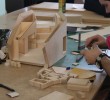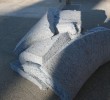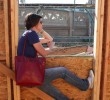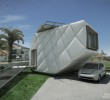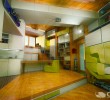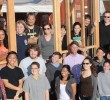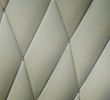2011 Solar Decathlon: SCI-Arc and Caltech
Video
CHIP Off a New Block
There are two facts about living in Los Angeles: real estate is expensive, and cars are beloved, if only out of necessity. A team of students from Southern California Institute of Architecture (SCI-Arc) and California Institute of Technology (Caltech) created CHIP, an affordable home that acknowledges both facts while saving energy. This 2011 Solar Decathlon entry employs conventional materials in unconventional ways, offering a new prototype for living in LA (and, yes, it protects your car, too).
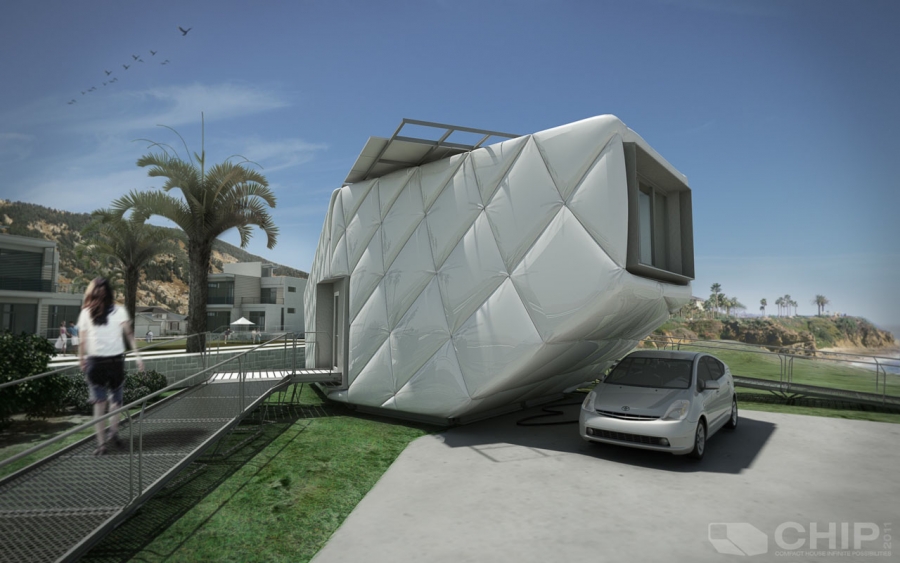
CHIP’s minimal footprint and futuristic design evolved from a variety of constraints. The SCI-Arc/Caltech team researched the Small Lot Subdivision Ordinance and determined that several CHIPs -- short for “Compact House Infinite Possibilities” -- could be placed on certain single-family lots, allowing the residents to split property costs. With an estimated price tag of around $250,000 each, CHIP makes homeownership a much more realistic proposition for young professionals.
The home’s billowing and faceted form maximizes both energy efficiency and interior space. The team began with the concept of a primitive box and manipulated it based on the sun’s orientation to optimize energy collection via roof-mounted photovoltaics. The north edge angles up to create a parking space below. The most unique aspect of CHIP’s exterior, however, is the fact that the insulation is on the outside, an “outsulation” made of affordable vinyl-coated fabric mesh. Considering the mild climate of Southern California, it might seem counterintuitive for a home to wear the equivalent of a puffy down jacket. Construction Managers Scott Davis and Brian Zentmyer explain that the home’s exterior functions like a thermos by isolating the volume of internal air to maintain a consistent and comfortable temperature. A thick wall is achieved without sacrificing precious interior space by building two stud walls.
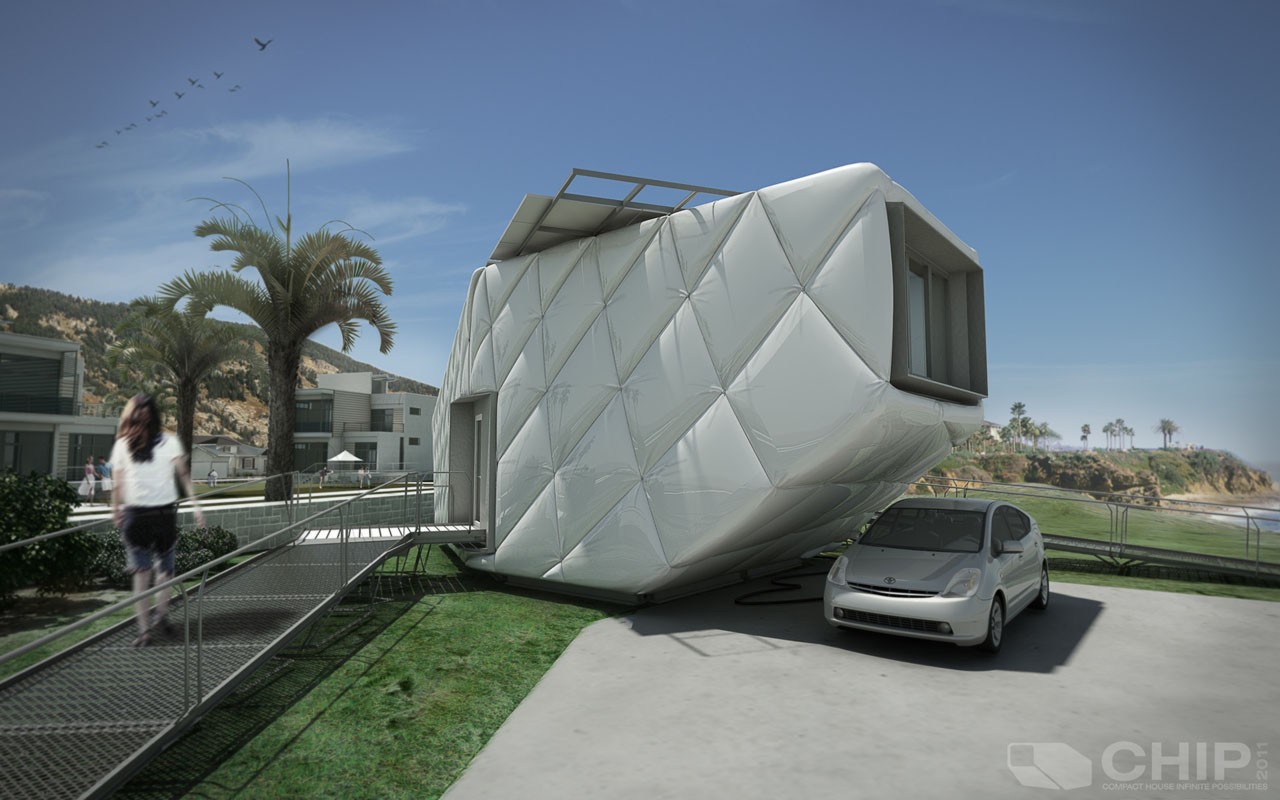
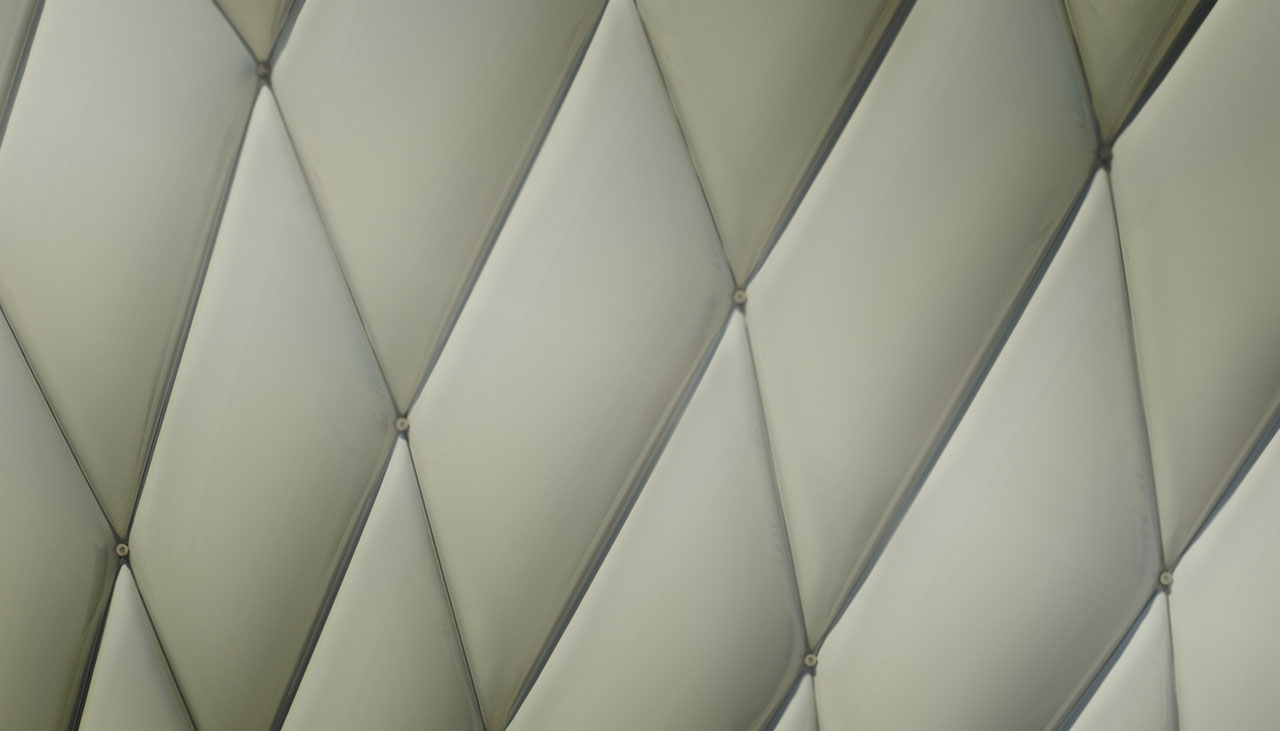
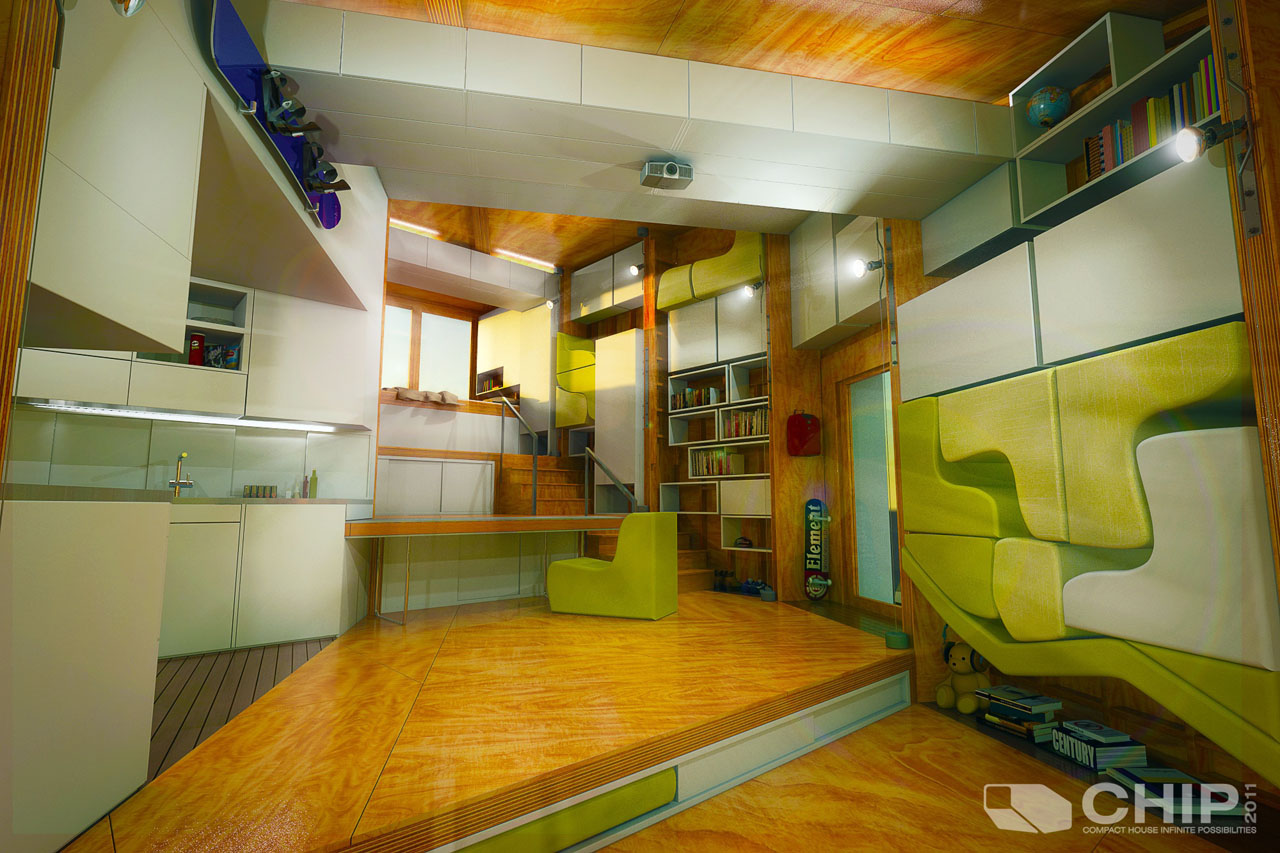
Inside CHIP, the ceiling vaults above a series of platforms, which rise to the maximum heights allowed by code while avoiding the need for railing. They telescope from public to more private spaces, distinguishing programmatic functions without compartmentalization. A poché wall houses mechanical equipment and provides storage room for furniture, which was custom-designed by students. In a nod to the home’s puffy exterior, the furniture is made of ergonomic foam blocks upholstered in felt, functioning in multiple configurations and a range of uses, “from pillow-fight size in some cases to table size in others,” shares Davis. Residents can further customize the interior by swinging out a soft wall hinged for privacy or flipping it down to create a guest area.

“Public education and outreach are among the most important aspects of the Decathlon. With all of the effort and innovation that has gone into creating CHIP, we are committed to continue researching and testing long after the competition." Elisabeth Neigert, Project Manager and recent SCI-Arc graduate.


Like all Solar Decathlon entries, CHIP’s design was constrained by trucking dimensions, although the team is particularly proud of their approach to modularity. While some teams build their homes as single units using standard mobile home technology and others build several units but plaster over the connections, the SCI-Arc/Caltech team chose to express the modularity. Although the home reads as a coherent entity from the exterior, clad in its puffy jacket, from the inside, seams, studs and structural detailing are on display, celebrating the craftsmanship and revealing the story of its construction.
Following Solar Decathlon 2011, CHIP will tour California as part of a series of exhibitions and educational programs. Ultimately, it will likely become a research and testing facility. “Public education and outreach are among the most important aspects of the Decathlon,” believes Elisabeth Neigert, Project Manager and recent SCI-Arc graduate. ”With all of the effort and innovation that has gone into creating CHIP, we are committed to continue researching and testing long after the competition.”
2011 Solar Decathlon: SCI-Arc and Caltech Planning and Construction Process

Murrye Bernard
Murrye is a freelance writer based in New York City. She holds a Bachelor's degree in Architecture from the University of Arkansas and is a LEED-accredited professional. Her work has been published in Architectural Record, Eco-Structure, and Architectural Lighting, among others. She also serves as a contributing editor for the American Institute of Architects' New York Chapter publication, eOculus.
Website: www.murrye.com
